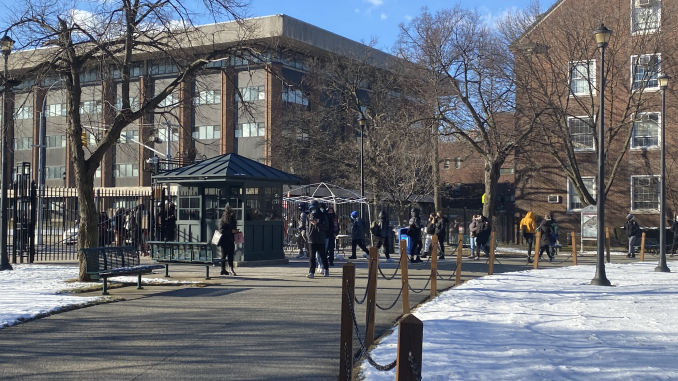
By Gabriela Flores
Enrollment in colleges nationwide has dropped throughout the pandemic and CUNY colleges are no exception. Community colleges like LaGuardia have undergone steep declines, with Brooklyn College and other senior colleges following suit.
As of press time, Brooklyn College’s total enrollment this spring stands at 14,313, a figure that noticeably dropped from last fall semester’s 15,938 total enrollment, according to BC’s Institutional Research and Data Science. The ongoing trend has persisted since the university’s move to online learning back in March 2020, where preliminary data showed a total enrollment of about 17,000 students. In comparison to the pre-pandemic spring 2019 semester, this current spring term represents approximately a 17% decrease, according to Richard Pietras, Brooklyn College’s Media Relations Manager. To address the ongoing drops and competitive admissions process, Brooklyn College staff and faculty have engaged in a five-year strategic enrollment plan, Pietras explained in a statement to the Vanguard.
“Since late last summer, the College has been conducting extensive fact-finding and identified several strategic opportunities that are already guiding us to make important progress on our enrollment goals,” Pietras said, noting that the college has worked with CUNY to provide students financial support, personal counseling, and other resources to navigate through the pandemic.
In comparison to last spring, the college has noticed a 13.6% fall in continuing student enrollment, according to Pietras. Professor Carolina Bank Muñoz, who chairs the college’s Professional Staff Congress union, has spoken with students who considered or have left their studies amid the pandemic, noting that many have cited financial hardships, caretaking duties, and other responsibilities that have led them to pause their academics.
“All of the students that I spoke to were overwhelmed by the combination of COVID, the pandemic, and having to contribute more to their families, whether that meant increasing the number of hours of work to make ends meet or having to take care of younger siblings,” said Bank Muñoz, who noted the latter was a common issue among struggling students. “All of that was so disruptive to students who were already pre-pandemic juggling a lot of those responsibilities.”
Bank Muñoz and her fellow PSC colleagues are pushing for New Deal for CUNY, which calls for free tuition, funding for infrastructure repairs, hiring of a thousand additional faculty members, among other demands that they believe would not only help raise CUNY’s enrollment overall but improve the university’s campuses throughout. With New York State Governor Kathy Hochul’s executive budget set to put aside $1.5 billion for CUNY and SUNY for the next five years, New Deal for CUNY advocates are hopeful that the initiative could come to fruition.
“All of those things have the benefit of increasing enrollment, because if students feel like they’re getting something for their education, then they’re gonna be more willing to enroll,” said Bank Muñoz. “But for me, again, it’s about having a different perspective on the kind of university we want.”
Undergraduate Student Government Co-President, Aharon Grama, who forms part of the college’s Prospective Yield Committee, finds that improving issues that students have reported to cause difficulties or inconveniences could aid in encouraging them to remain enrolled. One of these issues includes improving a student’s ability to connect with the registrar, financial aid, or other services without a “runaround.”
“We can actually retain a lot more students once we address these kinds of problems and that’s something that the college is actually trying to work on,” Grama said, noting that administrators have already made improvements. With new potential students, he has proposed having USG leaders attend informational sessions to speak with those on their college searches. Furthermore, Grama thinks that by continuing to improve Brooklyn College’s website, more leads from prospective students can be made.
Though the current enrollment trends downward, some across Brooklyn College are hopeful that the figures will rise as online learning and COVID-19 subsides.
“I want to stay optimistic. I think that it’s a temporary drop…in the midst of [a] crisis,” Bank Muñoz said. “I think that this immediate crisis is a crisis that’s very pandemic driven, and I’m less concerned about the long-term implications of that in terms of education.”
